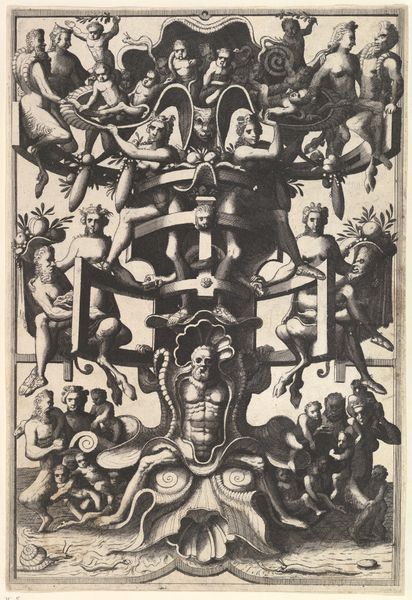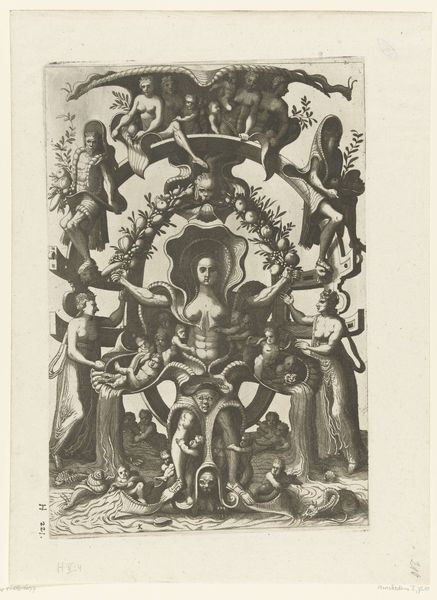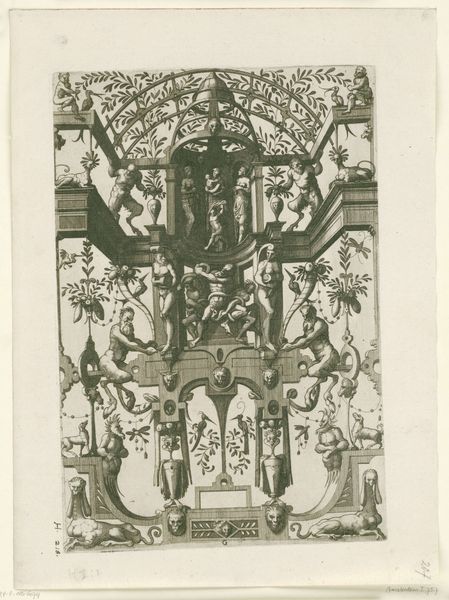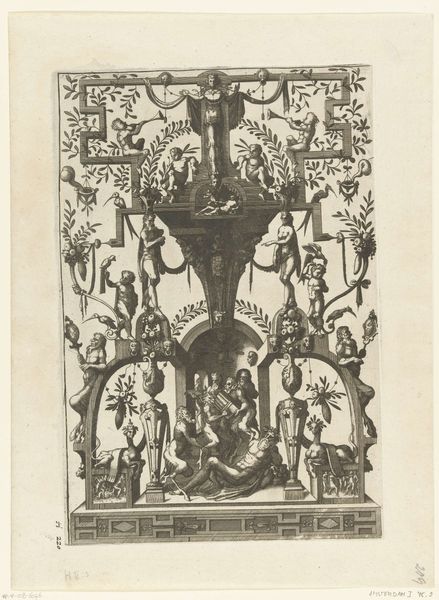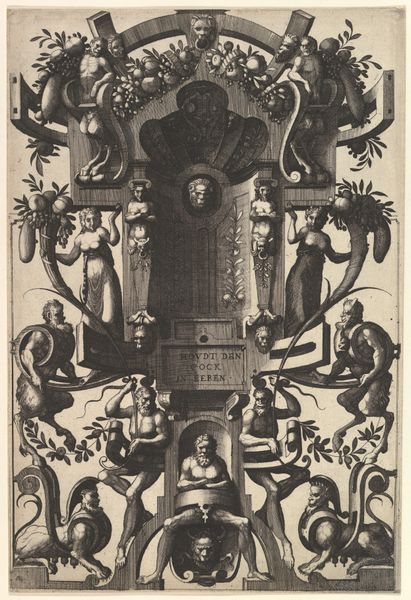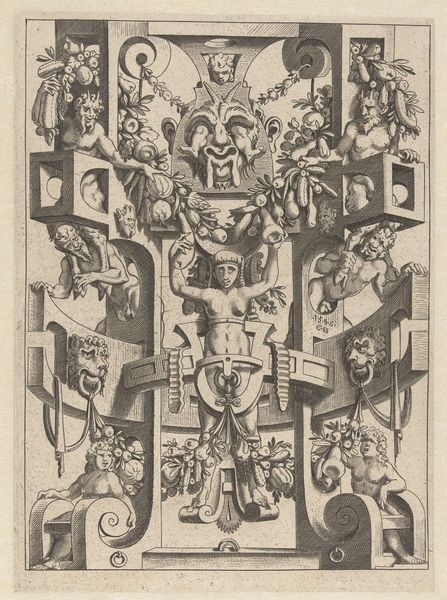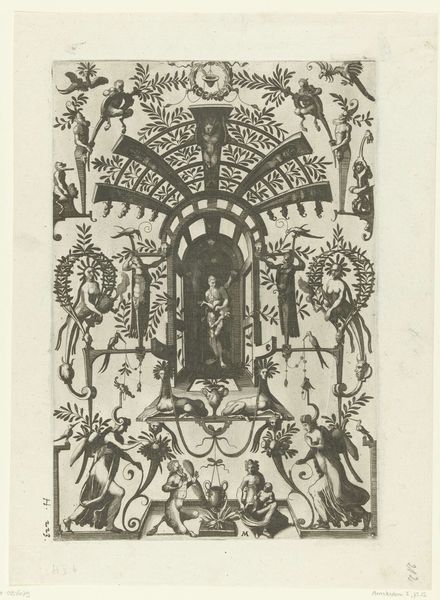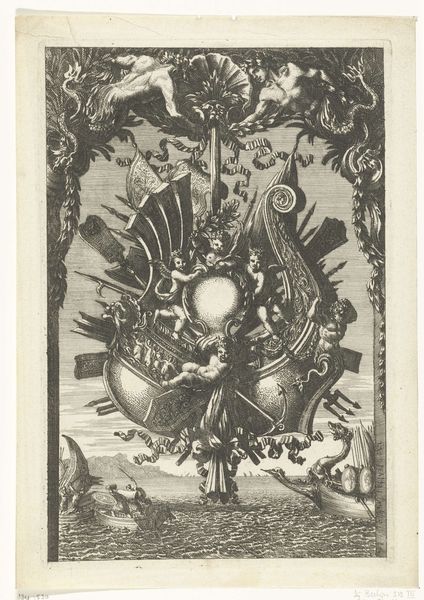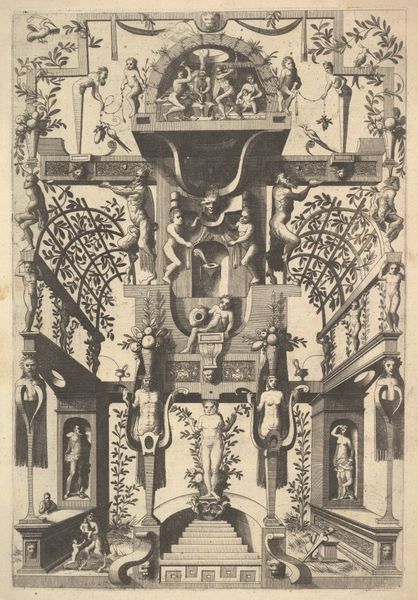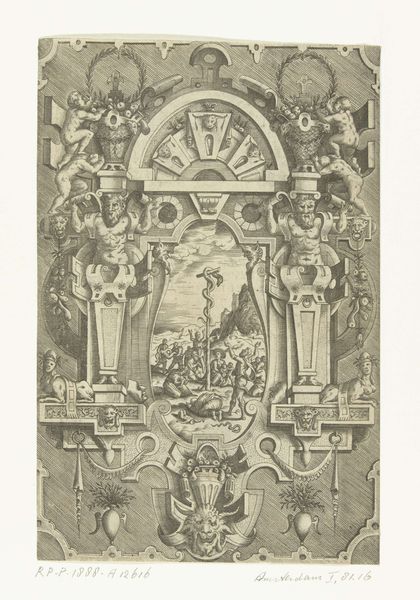
Vlakdecoratie: frame van rolwerk en schelpvormige constructie 1557
0:00
0:00
drawing, ornament, print, intaglio, paper, ink, engraving
#
drawing
#
ornament
#
pen drawing
#
ink paper printed
# print
#
intaglio
#
figuration
#
paper
#
11_renaissance
#
ink
#
pen work
#
northern-renaissance
#
engraving
Dimensions: height 306 mm, width 206 mm
Copyright: Rijks Museum: Open Domain
Curator: Here at the Rijksmuseum, we have a 1557 engraving entitled "Frame of Rolling Work and Shell-shaped Construction" by Johannes and Lucas van Doetechum. Editor: My goodness, it's so incredibly busy! The density of figures is remarkable, almost overwhelming, particularly within such a rigidly defined frame. The tactile quality achieved with the pen and ink is also impressive; you can practically feel the texture of the paper. Curator: It’s a fine example of Northern Renaissance ornament prints, wasn't it? Produced through intaglio—the image is incised into a plate, ink fills those grooves, and high pressure transfers the image to paper. It really shows the artist’s command of the printing press as a technology. The mass production meant accessible design for artisans, goldsmiths especially. Editor: Precisely, but note how those shell motifs, so classical in origin, morph into almost monstrous visages! See how figures blend with architectural components – satyrs, putti. They all evoke classical myths of transformation but made very relevant for that period through its execution. Curator: The linear precision does invite us to consider how printmaking democratized artistic trends during the Renaissance. How knowledge of classicism and design motifs circulated, affecting production value beyond elite circles. The making and means of exchange really allowed artisans to utilize new styles of craftsmanship across Europe. Editor: Undoubtedly, it made them popular, but notice how even here the symbolic order reveals the continuity of classical allegory, a world where human drama is interwoven with divine power? What of the image’s lower segment? It appears to illustrate humanity springing from the primal waters, which seems rooted to deeper questions surrounding nature. Curator: It underscores your idea of the work's lasting appeal, as does this style’s connection to artisan making. What sort of resources and technologies allowed artisans to emulate designs originally restricted to aristocratic circles? Those are really material transformations facilitated by artistic practice. Editor: Yes, and these symbols adapted over time. This reflects the continuous psychological drive towards symbolic thinking, wouldn’t you agree? I’m reminded how archetypes adapt according to socio-cultural contexts… Curator: It brings us back to how artists make their way throughout changes and what it takes for objects and methods of production to sustain appeal, and this does it very well. Editor: An interesting, yet fruitful dichotomy as to how our cultural memory shapes itself!
Comments
No comments
Be the first to comment and join the conversation on the ultimate creative platform.
